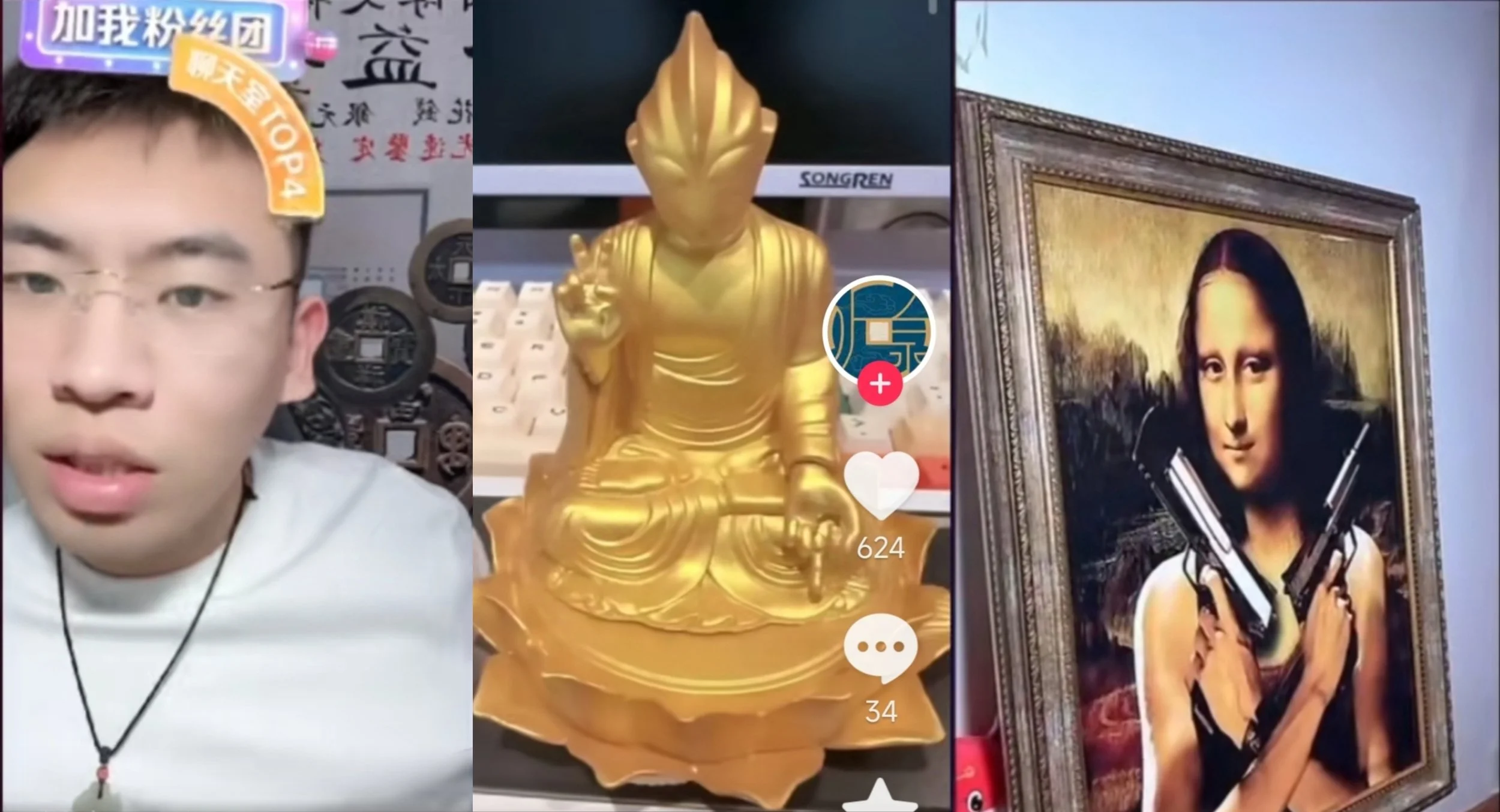Douyin’s digital takeover in China

China's media market is more complex and fragmented than ever. It is also unique. China’s online apps are not just different from those in other markets, but their significance in the marketing mix is also distinctive. Whereas TV advertising accounts for 29.8% of media spend in the US, and similar amounts in countries like the UK and Canada, it draws just 3.1% of budgets in China according to Guideline SMI data. On the other hand, 81.9% of marketing is spent online in China – almost double the share spent in Australia and NZ.
For foreign brands, recognising the importance of digital marketing in China is one step, but understanding the value of each digital touch point and how they shape the customer journey is even more important.
When dissecting China’s digital landscape, it is hard to ignore the importance of Douyin in the marketing mix. Its value was recognised in the latest BrandZ Index, which placed Douyin as the fourth most valuable brand in China – 22% more than last year, and among China’s top-10 fastest growing brands overall. It’s not hard to see why. Over the last two years, its share of digital spend has increased from 16% to 25%.
The popularity of Douyin has brought an overabundance of content creators all vying for mindshare. Consumers can swipe through thousands of videos a day on Douyin, but few are remembered. Most of those brands that really make consumers stop, think, interact and remember, come up with something that is differentiated, connecting to an intrinsic need of their target audience.
Many of the most popular Douyin videos are not polished, and some are popular for being unconventional. Yet many of the most-viewed videos and livestreams are supported by spending on precision ads, Key Opinion Leaders (KOLs) and grassroots influencers. This is alongside user-generated initiatives from hashtag challenges to selfie opportunities, supported by other online and offline touch points beyond Douyin. But behind it all, is usually a real understanding of their viewers’ needs.
Understanding which content will resonate is imperative, and in many cases, so is how to translate that content into a willingness to buy. Whilst Douyin started off as a short video platform for entertainment and information, it has fully morphed into a sales machine. Over 40% of Chinese urban households purchased FMCG products on the platform last year. In the first quarter of this year, L’Oréal’s sales on Douyin were larger than Tmall. It is also a formidable channel for sporting goods and fashion. In many categories, Douyin sales now exceed those of traditional e-commerce platforms.
Whilst sales through China’s bricks & mortar channels are almost twice as large as those online, the importance of ecommerce shouldn’t be sneezed at. Retail grew 3.5% in the first seven months of this year, entirely driven by online sales, which jumped 9.5%. Douyin was a significant contributor to that growth.
Yet the temptation of a sugar hit of sales appears too great for most brands. Most Douyin strategies are focused on transactional, short term results, feeding at the bottom of the funnel - at the expense of balancing longer-term brand building.
While foreign brands were initially slower to recognise Douyin as a marketing and sales channel, most are now engaged with the platform. But many could be doing it better. The large share of marketing budget spent on Douyin could have more sustainable returns by brand-building and understanding how their target audience uses it, how it fits with other touch points, and what to say and how to say it, to stand out and be resonant. China Skinny can assist with that.
A mixed bag for category and platform advertising last year, but some clear winners are reflected in the advertising spend
WeChat has been the quiet achiever of China’s online platforms. Despite the hype of Douyin and RED, the value of goods sold on WeChat reportedly doubled last year
Abstract marketing taps into the audience’s curiosity and creativity, making it a powerful tool for building memorable, distinctive brand narratives in the digital age
A softening ad spend market in China reveals some changes in priorities across online platforms and shifts in spending from major categories
Social media feeds increasing filled with “rough life” posts, alongside the popularity of more authentic retail spaces are just two examples of how Chinese consumers are seeking more real, less polished marketing
Traditional collectibles have become a form of social currency among young people. From spiritual comfort to stylish accessories, livestreams and e-commerce have made these pieces more accessible. And people watch appraisal livestreams for whacky collectibles as an entertainment.
China's media market is more complex and fragmented than ever. It is also unique. Digital accounts for a much larger share of spend compared to western markets, and Douyin is increasingly taking a larger share of that. But not every brand is maximising its Douyin investment
China's cross-media ad spend is unlike other markets, as new data reveals. Comparing China to the US, UK, Canada, Australia and NZ highlights stark differences
Douyin provides a platform for ordinary people to build small businesses. By creating unconventional and slightly whacky livestreams and videos, they've captivated young audiences and driven significant sales, despite their simple, rough-around-the-edges style.
Despite the Paris Olympics getting mixed reviews in China so far, the opportunities for brands to align with sports to connect with consumers is large, and growing
Have you watched the hit TV series The Tale of Rose that premiered this June? High-quality TV series like these offer a fantastic opportunity for brands to achieve their marketing goals in China. Check it out to see how they help brands make an impact.
At Euro Cup 2024, Chinese brands accounted for five of the 13 top-tier brands, more than any other country. The success of BYD’s sponsorship has been slightly dampened by an adult toy site in the host country of Germany
For about ¥200 ($27.50) a day, you can place your personal ad in some of China's metro stations. Chinese consumers are having a lot of fun with this platform job hunting, celebrating birthdays, proposing to loved ones, and even promoting influencer images…
Brands are exploring new advertising media. From airport luggage conveyor belts, bed sheets hanging on balconies to sewn-in labels, you might be surprised by their creativity.
Chinese household cleaning brand Blue Moon illustrates that even local brands can be very out of touch with the target audience, providing a case study of how not to market and do PR in China
Mother’s Day ads showed how socially attuned brands are to mums, with some great campaigns but also some woefully inappropriate
Douyin is moving from an embedded mall to a standalone app as it aims to break through existing limitations of its ‘interest-based e-commerce’ model
AI influencers are shifting hefty sales volumes n Douyin, but on close inspection there are some tell-tale signs that they are not real people
These CNY marketing campaigns showcase the effectiveness of integrating traditional culture with modern aesthetics
What has made Haidilao’s video receive over a billion views
Kraft Heinz’s flagship sauce in China, Master Weijixian, is celebrating its 40th anniversary with a campaign which ticks a lot of boxes in capturing current trends in China
Elon Musk is looking to develop Twitter/X into a China-style superapp. Looking at the way China’s apps are evolving, he’s got plenty of examples to choose from, which should factor in China marketing strategies
The best performing brands in China all have an uncompromising use of data to steer opportunity analysis, marketing and NPD decisions.
China's bottle water giant Nongfu Spring provides some good lessons on how to succeed in China, even after its share of scandals
China is notorious for its festivals, which are increasingly morphing into “themed shopping occasions.” When it comes to love, there are six official days on the calendar which fit the mould of the Western Valentine’s Day. Qixi, or the ‘Double Seven Festival’, on August 25 this year, is thought to be the most romantic and authentically Chinese. It celebrates a 2,000 year old love story with its roots in Chinese mythology; a mortal man, a goddess, forbidden love, talking oxen, astrological obstacles and bridges made up of magpies – all your ingredients for a powerful tale of romance.
The global pandemic has brought about much soul searching. Lockdowns and general uncertainty has given consumers around the world the impetus to reflect on what is important to them. This reflection has been echoed by businesses and we have even seen this at a government level in some countries.
There's nothing quite like staying indoors for a couple of weeks to hone in on your gaming addiction. The coronavirus outbreak and resulting time people are spending inside their homes has seen a sharp increase in Chinese playing games. At the peak of the outbreak, Chinese were spending 6.11 billion hours a day online - over seven hours for each of China's 840 million online consumers.
WeChat has finally created its answer to the gaping hole in its content ecosystem. WeChat Channels provides Tencent’s answer to the short-form video/image content dominated by the likes of Douyin, Kuaishou and Little Red Book.
Isn’t it amazing what a coronavirus outbreak can do to online usage habits. The infographic below illustrates how China's online millions (netizens) have altered their behaviour, with most of the country being homebound over the past few weeks. In the three weeks from Jan 14, online usage grew over 20% to 6.11 billion hours – over 6 hours per Chinese online.





























It's a lot cheaper to retain a customer than acquire a new one, so the old adage says. Many marketers in China don't seem to have got that memo, with marketing plans based around increasingly expensive livestreams and KOLs for sales, with limited initiatives to retain those customers once they've transacted.We track many loyalty initiatives at China Skinny, but one of the most exciting we've seen lately is from Chinese EV brand, Nio. Car sales have been one of the brightest categories in China's retail sphere, last month growing 17% year-on-year. As we noted in July, Beijing has been strategic in putting its weight behind car sales - it takes a lot of packaged goods or shoe sales to match that of a single car in making retail sales look rosy.